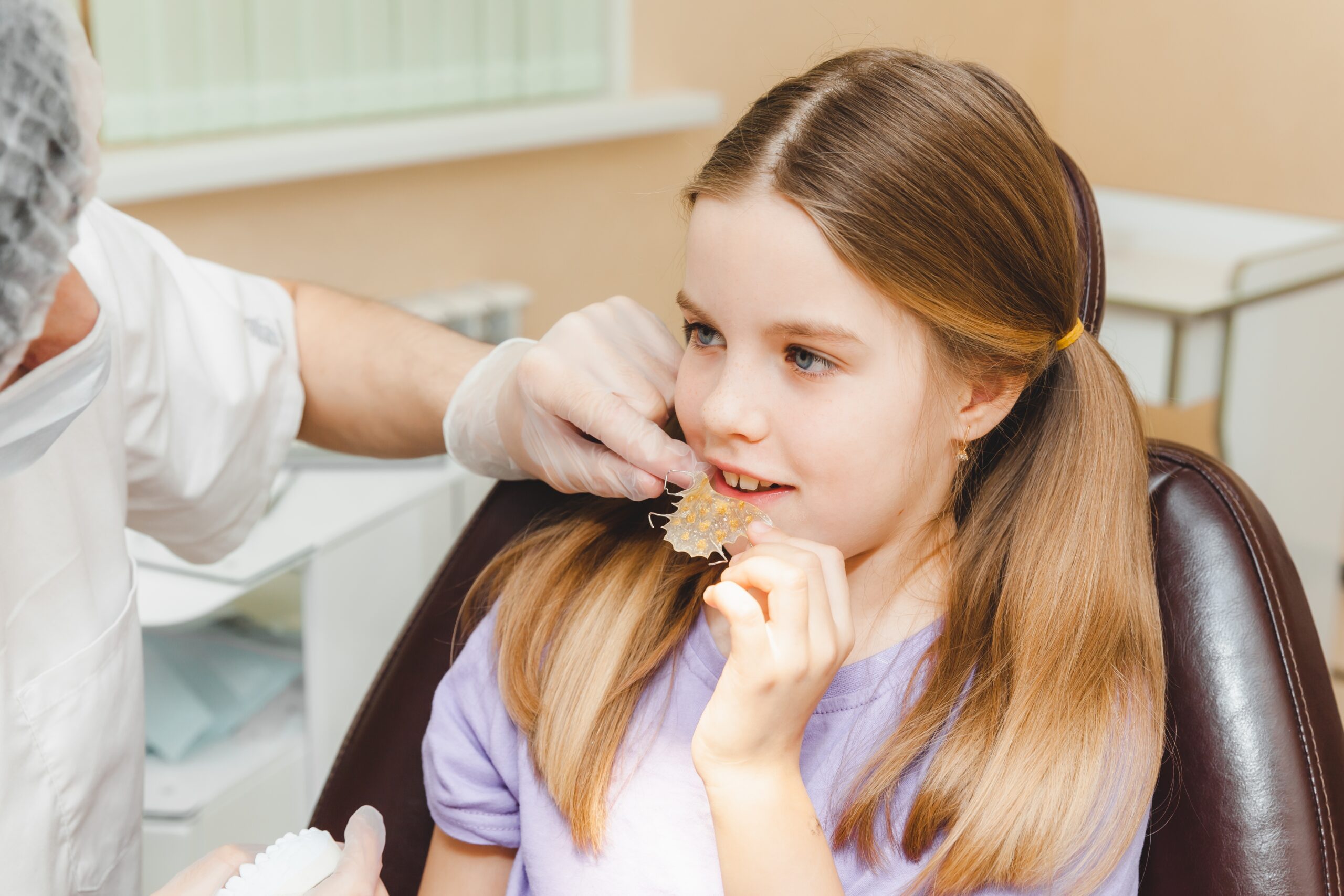
If your child has a crossbite, or you’ve been diagnosed with this type of malocclusion (improper bite) yourself, you might be wondering what causes it. Is it genetic or something you can prevent? In this post, Claremore and Tulsa orthodontist Dr. Anand Patel will weigh in.
But, First, What is a Crossbite?
A patient is said to have a crossbite if one or more of the top teeth sit inside of the bottom teeth when the jaw is closed. A crossbite can involve a single tooth or groups of teeth, and it can be dental (related to the teeth) or skeletal (related to the jaw).
According to the American Association of Orthodontists, there are two main types of crossbites:
- Anterior crossbite (front crossbite): One or more of the front upper teeth bite inside of the lower teeth.
- Posterior crossbite (back crossbite): One or more of the back upper teeth bite inside of the lower teeth.
What Causes a Crossbite?
Crossbite causes include:
- Genetics
Often, a crossbite boils down to the genetic blueprint of your tooth and facial skeletal development. In fact, if one of your parents or grandparents has a crossbite, you’re more likely to suffer from this type of malocclusion.
When a crossbite is genetic, it tends to be the result of a mismatch between the upper and lower jaw (e.g., the upper jaw is underdeveloped in comparison to the lower jaw). However, it can also be from other traits, such as inheriting a small jaw from one parent and large teeth from the other.
- Tooth Eruption Problems
The delayed loss of baby teeth or the abnormal eruption of permanent teeth can also cause a crossbite.
- Oral Habits
Oral habits, including prolonged thumb sucking and pacifier use and tongue thrust (reverse swallowing pattern), may lead to a crossbite. These habits put pressure on the palate, or roof of the mouth, behind the top front teeth. Over time, the pressure can shift teeth out of place and even distort the upper jaw bone.
- Mouth Breathing
Things like enlarged tonsils and craniofacial abnormalities are tied to chronic mouth breathing. Chronic mouth breathing in kids impacts their dental and facial development, potentially creating orthodontic issues, such as a crossbite.
- Injury
Less commonly, a jaw injury can cause skeletal misalignment, forcing the teeth into a crossbite position.
- Dental Work
An improperly designed and placed dental crown, bridge or implant can alter the bite.
- Online Aligners
People who undergo at-home clear aligner treatment also run the risk of developing malocclusion, such as a posterior or anterior crossbite. This is because this type of DIY treatment focuses solely on straightening the teeth. However, when you shift the teeth, the bite changes too.
This highlights the importance of seeing a certified specialist in orthodontics like Dr. Patel for any type of orthodontic care. An orthodontist has the experience to create an effective, customized treatment plan that results in straight teeth and a stable, aligned bite.
We’ve broken out the causes separately for ease of reading but the truth is, both genetic and environmental factors can be behind a crossbite. For example, inherited traits may predispose you to developing a crossbite while aggressive thumb-sucking then brings it out.
The Impact: Why Fix a Crossbite?
An untreated crossbite can lead to:
- Permanent changes in facial structure if you compensate by shifting the jaw to one side
- Difficulty keeping teeth clean, leading to tooth decay and gum disease
- Jaw and TMJ pain
- Problems with chewing
- Enamel wear
How to Fix a Crossbite
Two-Phase Orthodontic Treatment
Not all crossbites require early intervention. However, if the crossbite indicates an underlying issue with the jaw or it’s leading to lopsided jaw growth, phase 1 orthodontic treatment could be necessary.
With this approach, Dr. Patel starts treatment when a patient still has some of their baby teeth, usually between ages 7 and 11. He uses an appliance, such as a palatal expander, to guide jaw growth. This creates enough space for the permanent teeth to erupt properly and ensures the upper and lower arches will come together correctly.
When the phase 1 goals are achieved, Dr. Patel removes the appliance and the child enters a resting period. Once all of the permanent teeth are in, phase 2 treatment begins. During this phase, the patient wears braces or Invisalign® Teen to straighten the teeth and finetune the bite.
Braces
Braces are effective for crossbite correction. In the case of a single-tooth crossbite, braces could work on their own. In other cases, they’re usually combined with auxiliaries like rubber bands to provide the connective force needed to align the bite while also straightening the teeth.
Invisalign®
Can Invisalign fix a crossbite? Yes, you may still be a candidate for Invisalign if you have a crossbite. Generally, if multiple teeth are involved, Dr. Patel will bond Invisalign attachments to the teeth to help the aligners achieve more complex tooth movements. He may also use rubber bands to correct the bite.
How Long Does it Take to Fix a Crossbite?
Treatment time depends on a number of factors, including whether the crossbite is dental or skeletal, how many te complexity of the case and how well you adhere to the treatment plan.
Crossbite Correction in Tulsa and Claremore, OK
Now that you know what causes a crossbite, areeeth are involved, th you ready to explore treatment options for yourself or your child? Book a free consultation at The Brace Place. Our Tulsa and Claremore orthodontist Dr. Patel will develop an accurate diagnosis and personalized treatment plan to help you get the beautiful, functional smile you deserve.


























